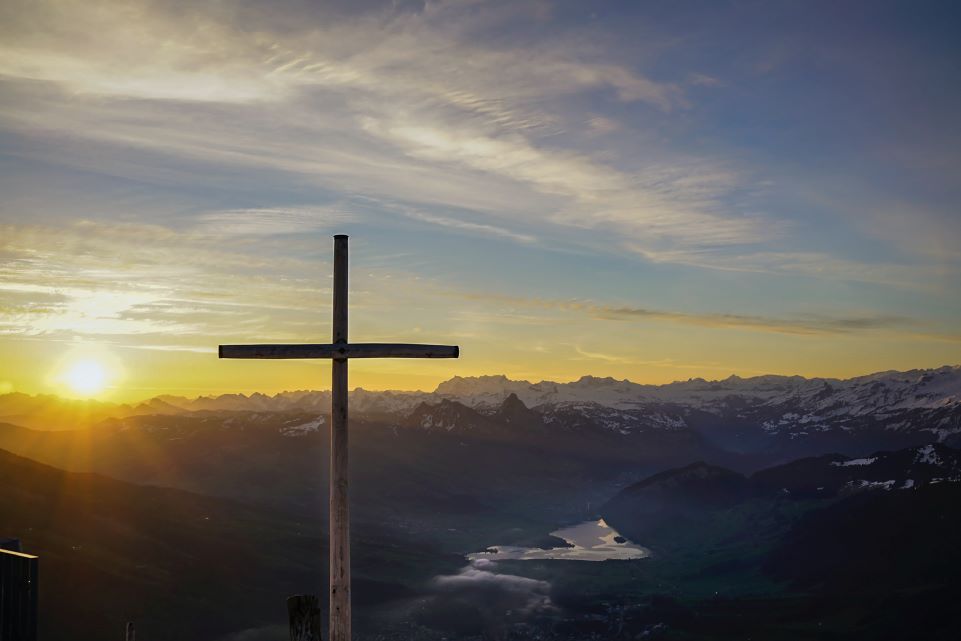Reflections on an Evangelical Becoming a Papist
September 17, 2020

The word “papist” has a distinctly “anti-Catholic” ring to it, and if you are immediately turned off from reading the rest of this article because of that word in the title—well, I apologize. But I chose that word “papist” to make it clear that the issue is not evangelicals becoming catholics. Evangelicals already are catholics; they are not Roman Catholics, and they are not papists. But terminological clarity aside, the news that one (now former) evangelical journalist has decided to become a Roman Catholic has caused me to reflect, and to put some of those reflections in writing.
To begin with, let me say that I am not one of those evangelical leaders who thinks there are no real Christians in the Roman Catholic communion. I find such an idea to not only be lacking in Christian charity, but also theologically suspect. After all, I know full well that there are many so-called “evangelical” churches that do not preach the biblical gospel. And I also know that even in the soundest of sound churches, there are no doubt individuals who are not truly born again. There are weeds among the wheat in even the most well-tended of harvest fields this side of glory.
That said, while I am sure there are real Christians within the Roman Catholic communion, and I am also equally sure there are those within evangelical denominations who are not real Christians, what you say you believe and what you claim to preach does matter. To risk offense, as I have looked at large swathes of the Roman Catholic communion over the years, I have concluded that there are many real Christians who are just being really poorly shepherded. By “shepherded,” I don’t mean badly taken care of or looked after, or not standing up for various moral positions; I mean not being taught in a reliable way the truths of the Bible.
Perhaps one story—anecdotal, but representative, I think, of what happens outside the ivory towers of journalism and academia—is worth repeating. At one church I pastored, we ended up buying a former Roman Catholic church building. We were out of space, needed a place to meet, and purchased this large Roman Catholic edifice. The diocese was very kind to us. I met with the local bishop over lunch and built a connection. We wrote a letter to the powers that be in that diocese advocating for our position. Essentially, our case was that given that another former Roman Catholic building had recently been turned into a strip club nearby, we might be Baptists, but it could be worse. At least we were going to use the building for a religious and moral purpose. At the end of the advocacy process, we came up with the required money—through the generosity of God’s people and the extraordinary movement of God at that time—and that church still meets in that former Roman Catholic church building.
I’m telling this story not just to indicate that I am by no means “anti-Roman Catholic,” but also for this particular part of the story that I will now relate. At the front of the building was a huge altar. Above the altar was a massive picture of—I kid you not—God the Father, God the Son, and Mary. Each were equal in size. I realized then why Islam became convinced that Christians worshiped Mary. Who could look at that picture and conclude any differently? But that was not the end of the surprising level of confusion we discovered. That altar had to be de-commissioned (I’m not sure anymore of the exact religious jargon that was used, but you get the idea), and so we waited with bated breath as to what would happen once it had been de-commissioned. We went back into the building expecting the huge, and frankly rather ugly, high altar to have been removed, for which we would have breathed a sigh of relief, but no, it was still there. On closer examination we discovered that a very small square block had been chiseled out of the center of the altar. With further research, I discovered that in that altar had been a relic of a saint, and indeed traditionally part of what makes a Roman Catholic altar a real altar is that it has some relic of a saint embedded in it.
This seems to me to be a fairly obvious and stunning confusion about what it means (biblically) to be a saint, and also what it means to approach God with freedom and grace through the blood of Jesus. The priest of that church, before he died, took us on a tour of another church that he was also responsible for in the area. He described how that church had just managed to escape being hit by a recent storm and how grateful he was for that. He said that a certain saint had protected that building. When the person I was walking with sought clarity about that statement, asking if he meant that God had protected the church, the priest immediately replied, “No, I don’t; I mean the saint protected it.”
Again, the level of confusion is not small. I’m not saying that priest was an evil man—I hardly knew him, after all—nor am I saying there isn’t confusion within some evangelical churches, and frankly confusion within the minds and hearts of us all. But these are not small errors.
For some reason, especially in academic evangelical circles, Roman Catholicism is associated with an increased intellectual sophistication. It is viewed as the old mother of the churches and that sainted age gives it a hallowed credibility in the eyes of some. But scratch beneath the surface and you begin to find many other things at work. And besides, the claim to be the most ancient of the churches is a long-disputed claim. The Orthodox churches dispute that. As does the Armenian Apostolic church. I myself come from a country whose Christianity goes back before Roman Catholicism to the Celtic church, and the great heroes of the faith of those Isles from which I come are historically people like Cuthbert and Bede.
You’ll note I have not mentioned the Reformation heroes. That’s not because they are not also heroes. Read about John Wycliffe, the morning star of the Reformation. Read about Hus. Read about Peter Waldo. And of course, don’t forget Luther and Calvin. And don’t be persuaded that “Catholicism” is more sophisticated than “evangelicalism.” Evangelicals must be catholics—the word means universal, referring to the one true universal church of all true believers. But our authority is vested in Christ as revealed in the Scriptures. That means we follow the “royal law” to love our neighbor (James 2:8), of whatever sect, and it also means that we contend for the faith once for all given to the saints (Jude 3). To that end, let us give the last word to Jude:
“But you must remember, beloved, the predictions of the apostles of our Lord Jesus Christ. They said to you, “In the last time there will be scoffers, following their own ungodly passions.” It is these who cause divisions, worldly people, devoid of the Spirit. But you, beloved, building yourselves up in your most holy faith and praying in the Holy Spirit, keep yourselves in the love of God, waiting for the mercy of our Lord Jesus Christ that leads to eternal life. And have mercy on those who doubt; save others by snatching them out of the fire; to others show mercy with fear, hating even the garment stained by the flesh.
“Now to him who is able to keep you from stumbling and to present you blameless before the presence of his glory with great joy, to the only God, our Savior, through Jesus Christ our Lord, be glory, majesty, dominion, and authority, before all time and now and forever. Amen.” (Jude 17-25)
WANT MORE?
To receive God Centered Life articles directly in your inbox, as well as other resources, click "subscribe" and fill out the information.

